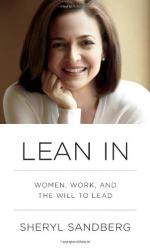
|
| Name: _________________________ | Period: ___________________ |
This test consists of 5 multiple choice questions, 5 short answer questions, and 10 short essay questions.
Multiple Choice Questions
1. According to the author in Chapter 8: “Make Your Partner a Real Partner,” how many states in the U.S. provide any income replacement for the care of a new baby?
(a) 12.
(b) 3.
(c) 5.
(d) 9.
2. The author asserts in Chapter 7: “Don’t Leave Before You Leave,” “When husbands work fifty or more hours per week, wives with children are” what percent “more likely to quit their jobs than wives with children whose husbands work less”?
(a) 20%.
(b) 56%.
(c) 90%.
(d) 44%.
3. Who “joined Facebook in 2008 and held a number of jobs throughout the company in communications, human resources, and mobile products,” according to the author in Chapter 6: “Seek and Speak Your Truth”?
(a) Omid Kordestani.
(b) Don Graham.
(c) Molly Graham.
(d) Alice Walker.
4. What U.C. Hastings law professor is cited in Chapter 11: “Working Together Toward Equality” for having said, “These mommy wars are so bitter because both groups’ identities are at stake because of another clash of social ideals: The ideal worker is defined as someone always available for work, and the ‘good mother’ is defined as always available to her children”?
(a) Rosalind Einhorn.
(b) Leymah Gbowee.
(c) Joan Williams.
(d) Judith Rodin.
5. After giving her TEDTalk, Sheryl Sandberg received numerous letters from women who were inspired by it. One of her favorites that she discusses in Chapter 10: “Let’s Start Talking About It” came from what consultant in Dubai?
(a) Gayle Tzemach Lemmon.
(b) Sabeen Virani.
(c) Padmasree Warrior.
(d) Shankar Vedantam.
Short Answer Questions
1. After working in the Obama White House, who joined Facebook to run global public policy, according to the author in Chapter 6: “Seek and Speak Your Truth”?
2. According to the author in Chapter 7: “Don’t Leave Before You Leave,” what percentage of mothers whose husband’s earnings landed in the top 5% were out of the labor force in 2006?
3. In “The New F-Word,” who is the college English professor that observed something strange in her Introduction to Feminist Studies course?
4. Who is quoted in the final chapter as having said, “Our job is not to make young women grateful. It is to make them ungrateful so they keep going”?
5. What company did the author’s husband found in L.A. and then sell to Yahoo, according to the narrative in Chapter 8: “Make Your Partner a Real Partner”?
Short Essay Questions
1. What is the first step to moving forward past gender bias in the workplace, according to the author in Chapter 11: “Working Together Toward Equality”?
2. What lesson does the author say she learned from her correspondence with Ray Kelly in Chapter 6: “Seek and Speak Your Truth”?
3. Who is one example that is cited by the author as an individual who had to make an immediate choice between career and family in Chapter 7: “Don’t Leave Before You Leave”?
4. What is one example of the dangers of blindly following leaders that Sandberg describes in Chapter 6: “Seek and Speak Your Truth”?
5. Who does the author praise for embracing emotion in the workplace in Chapter 6: “Seek and Speak Your Truth”?
6. What does Sandberg say often creates a double standard and compels women to leave the workplace in Chapter 8: “Make Your Partner a Real Partner”?
7. What did Sharon Proczter say of “having it all” in Chapter 9: “The Myth of Doing It All”?
8. What does Sandberg describe as an ideal partner for women to succeed alongside in Chapter 8: “Make Your Partner a Real Partner”?
9. What website and organization does the author promote in the Afterword: “Let’s Keep Talking”?
10. How did Elise Scheck describe her experiences during pregnancy, according to the author in Chapter 7: “Don’t Leave Before You Leave”?
|
This section contains 1,045 words (approx. 4 pages at 300 words per page) |

|




